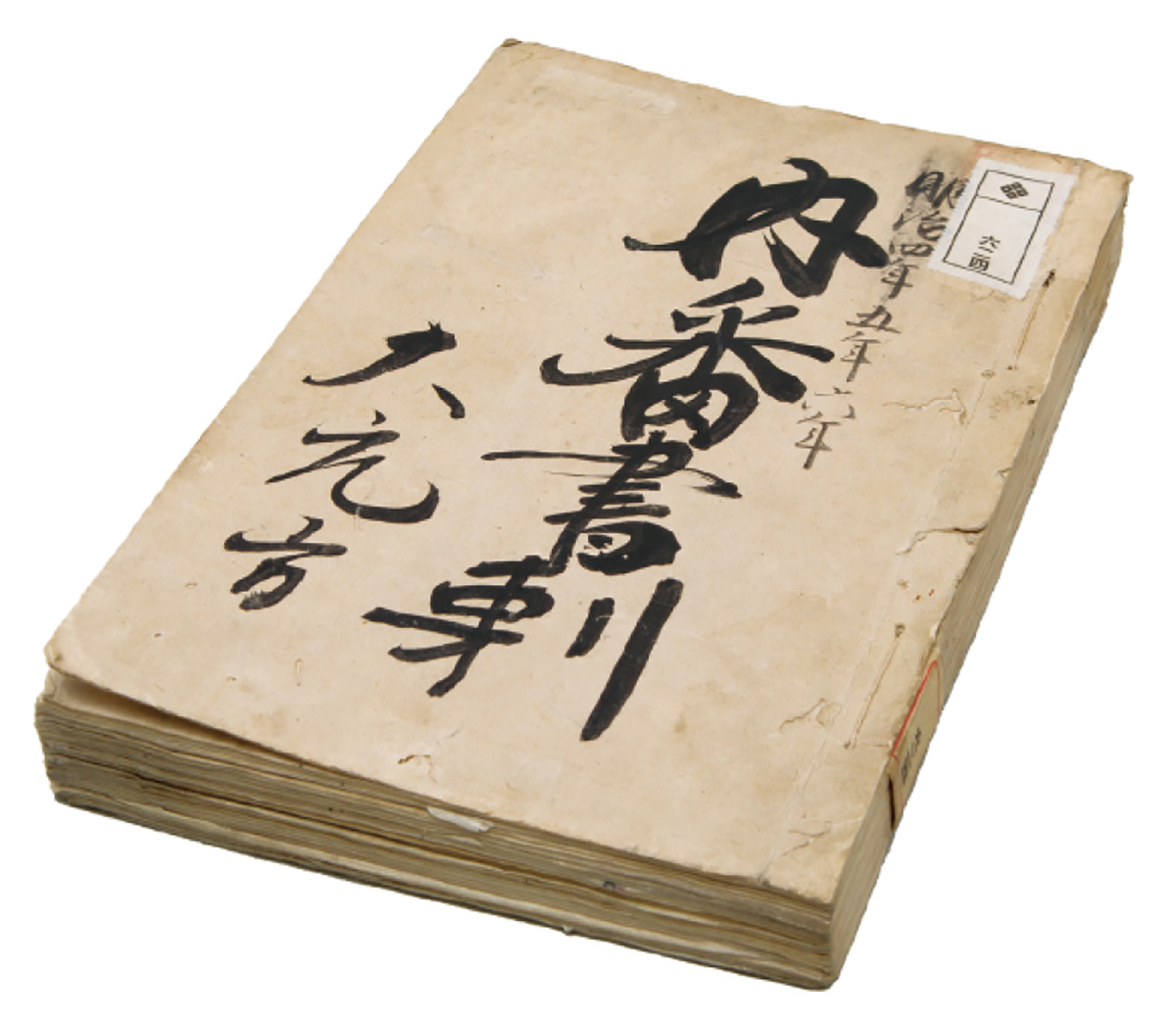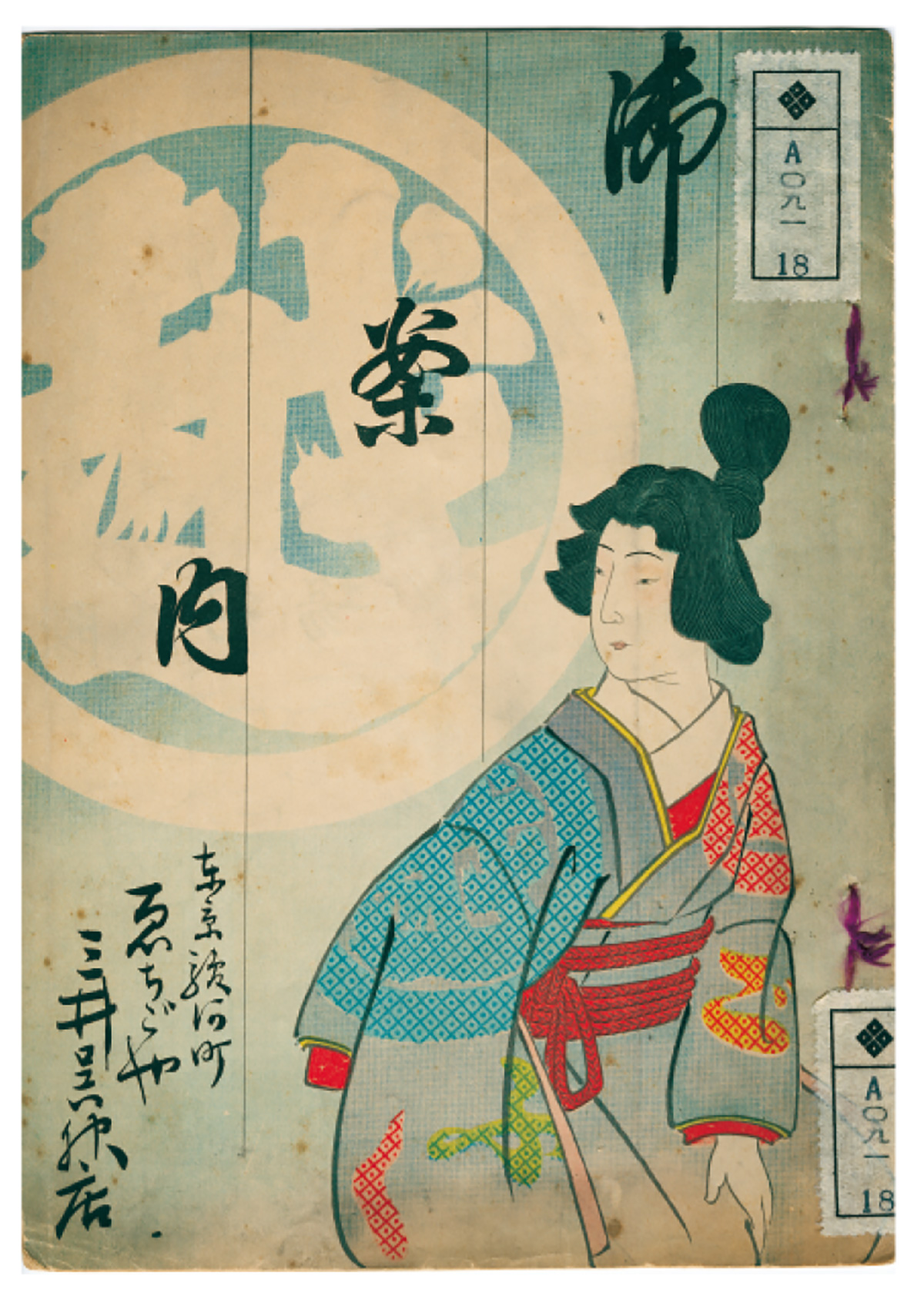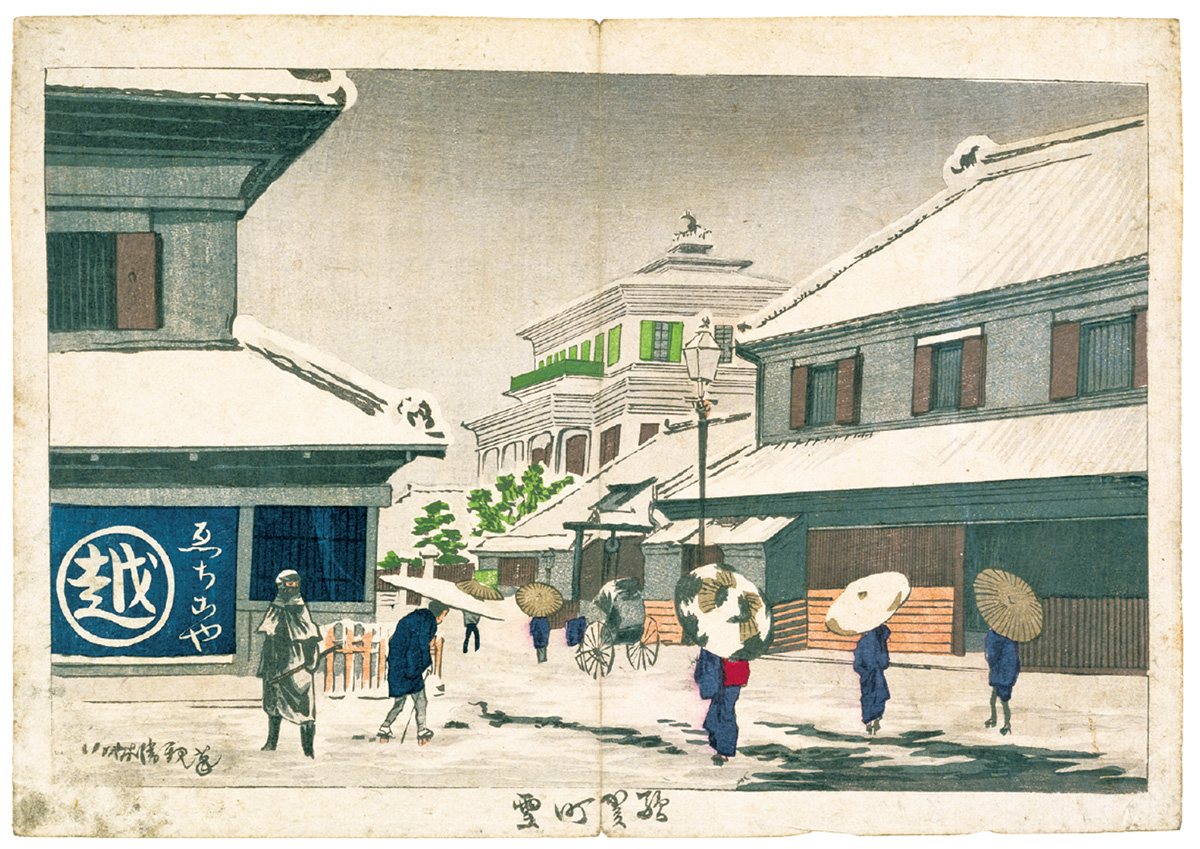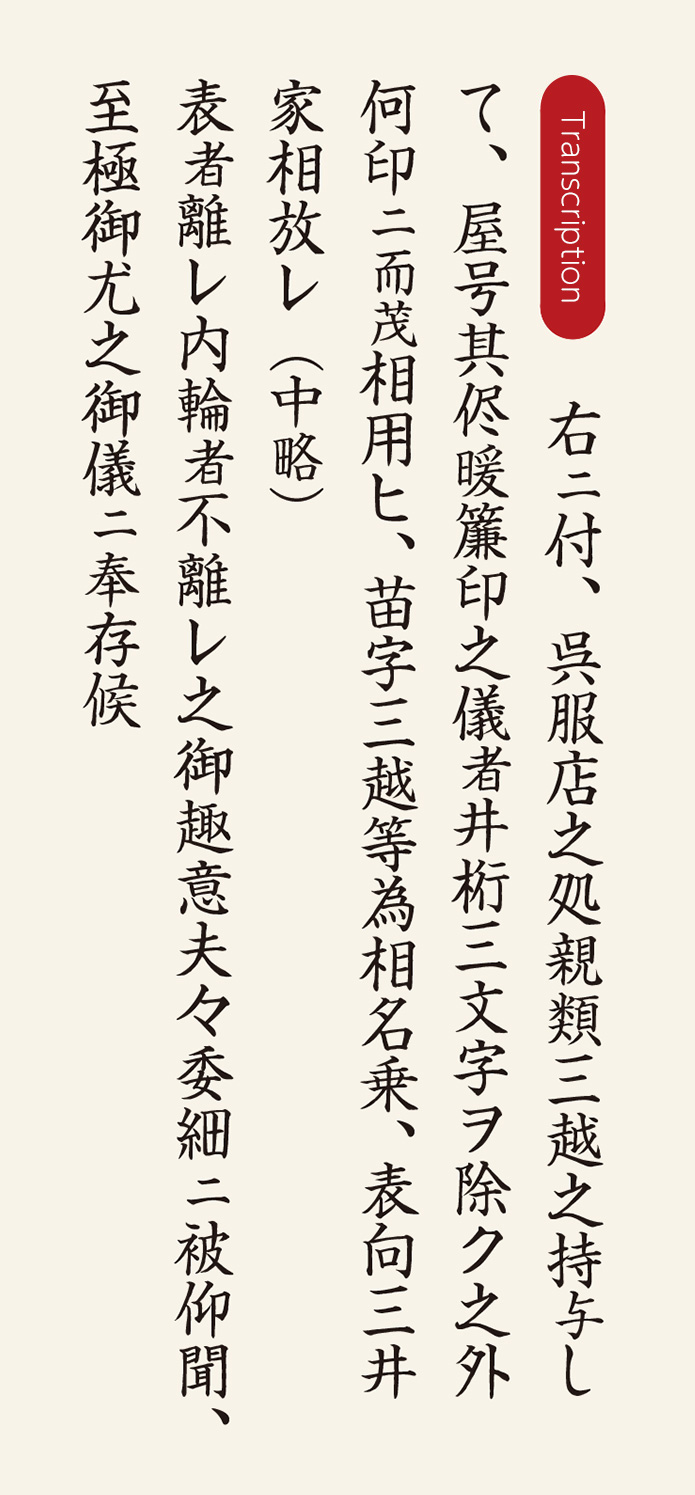26 Separation of the Kimono Stores

A Slump in the Kimono Business
After the end of the Tokugawa shogunate, the kimono division struggled through an extended slump, a situation which continued to worsen after the start of the Meiji period. Mitsui Echigoya, which had lost customers as a result of major changes in society, saw its level of bad debt (delinquent loans) rise to about 11,000 ryo by 1868. Further, between the spring of 1867 and the fall of 1868, the division found itself unable to generate the profits due the Omotokata (→10), and cumulative arrears grew to nearly 140,000 ryo. In June 1870, the Hondana was renamed Gofukuten (kimono store), and the kimono business, which until then had been positioned as Mitsui’s core business, had fallen from favor.
Circumstances behind the Separation
As the slump in business at the kimono stores took a serious turn, the Meiji government began urging the Mitsui leadership to withdraw from the business. At the time, the government was contemplating putting Mitsui at the center of the banking system (→25), and was concerned that the kimono stores would discredit Mitsui. In September 1871, Okubo Toshimichi, Inoue Kaoru and others instructed Minomura Rizaemon, who had presented himself on behalf of Mitsui, to refrain from using the Mitsui name on any business other than the finance business. Further, in January of the following year, Inoue invited Mitsui Takayoshi, Takaaki, and Takakiyo, as well as Minomura and Saito Junzo (→24) to his private residence, and along with Okuma Shigenobu and Shibusawa Eiichi, recommended that they separate the kimono stores from the rest of the business and asked for an answer on the spot.
“A Split in Appearance Only”
After completing some internal arrangements, in March 1872 Mitsui decided to focus on establishing a bank, and accepted the separation of the kimono stores. They set up a new, fictitious family called the Mitsukoshi family, taking the character mitsu from the Mitsui family name and the character echi (or etsu, but also pronounced koshi) from Echigoya, and separated the kimono business by transferring it to this new entity. They also dropped the stores’ traditional Igetasan emblem and replaced it with the character for koshi in a circle. As explained in the commentary on the historical documents at the end of this article, it is thought that this was the Mitsui family’s way of achieving the separation of the business, but with the intent of giving the appearance of a split while for all practical purposes keeping the kimono business in-house. At the end of the letter shown below, Takatoki and Takashige write that this move involved “top secret internal discussions,” and that it would be a “major incident” were the information to get out. One can see how the withdrawal from the kimono business was a major event for the Mitsui family.
From Kimono Store to Department Store
In the newly created Mitsukoshi family, the head employee served as the head of the family under the name Mitsukoshi Tokuemon, but in 1877, Takanobu, second son of Takashige, assumed the name of Tokuemon, heir to the Mitsukoshi family. Later, in 1892, the Mitsui family decided to revert Tokuemon to the Mitsui name and added him to the family. As a result, the Mitsukoshi kimono stores were “recovered” as a Mitsui family business, and relaunched the following year as an unlimited partnership, Mitsui Gofukuten. However, after advancing a series of management reforms, including the introduction of an open merchandise display system, in 1904 Mitsui Gofukuten was once again spun off and went independent as Mitsukoshi Gofukuten Co., Ltd. In January of the following year, ads carried in major newspapers nationwide announced a new “department store,” and Mitsukoshi became a pioneer of department stores in Japan.

An Omotokata record of letters from Mitsui family members and employees. Items listed here include a reply sent on February 4, 1872, under the joint names of Mitsui Takatoki (8th generation of the Shinmachi family) and Mitsui Takashige (7th generation of the Isarago family) to the directors of the Tokyo Omotokata, Mitsui Takayoshi, Takaaki and Takakiyo (→24). Takatoki and Takashige, along with Takakiyo, were listed as directors of the Tokyo Omotokata. The letter clearly describes the process behind the separation of the kimono division.
Translation
“Regarding the separation of the kimono business to concentrate on the financial business, the kimono stores shall belong to Mitsukoshi, a relative of Mitsui, and the trade name shall remain the same, however the logo shall not use the igeta enclosing the character for “three.” The name Mitsukoshi shall be given to the family running the kimono business, for all appearances separating it from the Mitsui family. The separation shall be carried out with the purpose of giving the appearance of a split while keeping the business in-house.”
We are sure you are correct regarding the above.


Illustration by Kobayashi Kiyochika, Meiji period. In the foreground at left is the Mitsukoshi Gofukuten. At the doorway is a noren (shop curtain) displaying not the Mitsui emblem (Maru-ni-igetasan) but the character for koshi enclosed in a circle, the emblem that is well-known to this day. The Japanese/Western-style building in the background, called the “Surugacho Mitsui-gumi House” (→28), was completed in February of 1874, and in 1876 became the main branch of Mitsui Bank.

